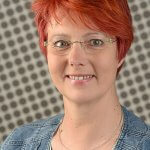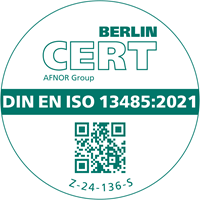In your capacity as an audiologist and acoustician you regularly conduct training courses and seminars on a variety of audiological topics throughout Germany . We are very glad that you, as a recognised specialist, are ready to answer some questions about Otis – the virtual patient. When and how did you first find out about this audiometry training program?
Many thanks for your kind words of welcome. I’ve known the program for about one year; I was introduced to it by Siegrid Meyer, responsible for training at the Academy for Hearing Aid Acoustics in Lübeck.
You have already worked extensively with the program. How realistic do you think the audiometry training with virtual patients is? How well can the knowledge and skills acquired with the virtual audiometer be transferred to actual practice?
As more and more audiometers are PC-controlled, working with virtual audiometers using this program is very close to real pratice. The procedures can be easily transferred to actual working with many audiometers now in use. The more important thing for me, however, is that by using Otis – the virtual patient theoretical knowledge can be practiced and thus consolidated.
You have also started using Otis – the virtual patient in your courses. What has been your experience with it?
The program is very well received, and course participants really enjoy working with it. The great advantage apart from this is that we no longer need so many audiometers to be able to run practical exercises with the course participants.
E-learning is not always actually superior to learning using traditional methods. What is your evaluation of e-learning for audiometry using Otis?
For me there are clear advantages in using e-learning in this case. Audiometry testing is a skill that requires a great deal of practice. When working in an ENT clinic or as an aspiring hearing aid audiologist, it is not always possible to use the test subjects for ‘practice’, as this would often take up a great deal of time. So for me, Otis – the virtual patient is a suitable medium for becoming familiar with the material that makes up audiometry.
What are your expectations of the program, or what future improvements would you like to see made both to the methodological and didactic aspects and to the audiological elements?
A program like this should reflect reality as closely as possible. My wish at the minute is to see the program expanded as quickly as possible – for example, to include speech audiometry and other suprathreshold test procedures commonly used in audiometry.
As a medical specialist and an audiologist you are well versed both in hearing aid audiology and in diagnosis. Where do you think that Otis – the virtual patient can best be deployed?
I see the main areas as being in ENT clinics for training assistants, and for the trainees in hearing aid dispensaries. This program could possibly also be used in the Academy for Hearing Aid Acoustics in Lübeck*, both for private study (outside the classroom) and for assignments or examinations, as the program also includes an exam component. The examiner or the instructor can then quickly apply remedial action to any weaknesses revealed.
The acquisition costs for Otis – the virtual patient are appreciably higher than for an audiometry textbook. Is it still a worthwhile investment for a medical clinic or a specialist hearing aid dispensary to buy a training package like this? If it is, what are the benefits from the investment?
As I’ve said, audiometry is a matter of practice. Correct results can only be achieved with a great deal of practice and a feeling for the activity – and so beginners need a lot of training. That is what Otis – the virtual patient provides and a book doesn’t. In ENT clinics and specialist hearing aid dispensaries the payback on the investment is that trainees do not need to practice on real patients or clients, which would hold everything up and lead to delays. They can practice without any difficulty at times when it does not interfere. In addition, the program is always available, so they don’t have to wait for a suitable test subject.
Thank you very much.




